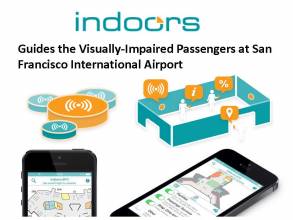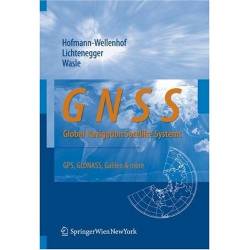A confluence of technology, policy, and applications is turning indoor venues into the next big frontier for positioning and navigation.
Recent market studies have heralded the prospects for positioning, navigation, and tracking inside buildings where GNSS signals are often attenuated or blocked entirely. Many products and conceptual designs combine the indoor technologies with GNSS to provide “ubiquitous” positioning.
A confluence of technology, policy, and applications is turning indoor venues into the next big frontier for positioning and navigation.
Recent market studies have heralded the prospects for positioning, navigation, and tracking inside buildings where GNSS signals are often attenuated or blocked entirely. Many products and conceptual designs combine the indoor technologies with GNSS to provide “ubiquitous” positioning.
In its report, “Indoor LBS: Applications, Advertising, and Revenues,” released earlier this year, ABI Research estimated that by 2019 new indoor positioning capabilities would drive more than $5 billion from targeted in-store offers, hyperlocal search, and in-application advertising. The study assessed the prospects across 11 retail verticals for major indoor positioning technologies, including beacons, RFID, near-field communications (NFC), Wi-Fi hotspots, handset-based technologies such as LED (light-emitting diodes), sensor fusion, and LTE Direct, and network-based technologies employing such resources and techniques as time difference of arrival, small cells, and LTE. Inertial measurement units, vision-based positioning, and other more esoteric approaches have also been proposed to meet the growing demand for indoor positioning.
Senior analyst Patrick Connolly said, “Many companies have focused on one technology or vertical, but it’s clear that both the opportunity and competition is much greater. The industry needs to consider the whole ecosystem and which technologies are best suited to each application and vertical.”
Earlier this month, market analytics firm Research and Markets announced its “Global Indoor Positioning and Indoor Navigation (IPIN) Market 2014-2018,” which predicted that the market would increase at a cumulative annual growth rate (CAGR) of more than 48 percent over the next four years. According to the study, "The use of hybrid positioning technology, which combines the best of both Global Positioning System and Wi-Fi, is a key trend in the market. The Bluetooth Low Energy [BLE] indoor tracking technique, used by many beacon devices, is emerging as a low power consuming, inexpensive alternative to conventional deployment methods."
Along those lines, a relatively new technical conference on the subject —UPINLBS: Ubiquitous Positioning Indoor Navigation and Location Based Service — will take place November 20–21 in Corpus Christi, Texas.
IHS Technology offers another take on the subject in “Opportunities for Visible Light Communications [VLC] and Light Based Indoor Positioning Systems,” which focuses on the prospects for VLC in the competitive environment of other positioning technologies.
Companies vying for the indoor positioning market could well be aided by new Federal Communcations Commission (FCC) requirements for enhanced 911 (E911) capability on mobile phones for automatic location of emergency callers. The initial E911 rulemaking that began in the mid-1990s provided an unexpected impetus for location-based services (LBS) that exploited GNSS and other positioning technologies that migrated to portable devices as a result of the FCC initiative.
In its Third Further Notice of Proposed Rulemaking published in the March 28, 2014, Federal Register, the commission proposed to revise its regulatory framework for delivery of accurate location information to public safety answering points (PSAPs or 911 call centers) for emergency wireless calls placed from indoors.
The proposed standard would require Commercial Mobile Radio Services (CMRS) providers to deliver horizontal location (x- and y-axis) information within 50 meters of the caller for 67 percent of 911 calls placed from indoor environments within two years of the effective date of adoption of rules, and for 80 percent of indoor calls within five years.
Further, under the proposed rule, CMRS providers would be required to report vertical location (z-axis) information within 3 meters of the caller for 67 percent of indoor 911 calls within three years of the adoption of rules, and for 80 percent of calls within five years.
In the near term, the FCC says, those indoor accuracy metrics would provide approximate location information sufficient to identify the building and the floor level from multi-story buildings for most indoor calls.






